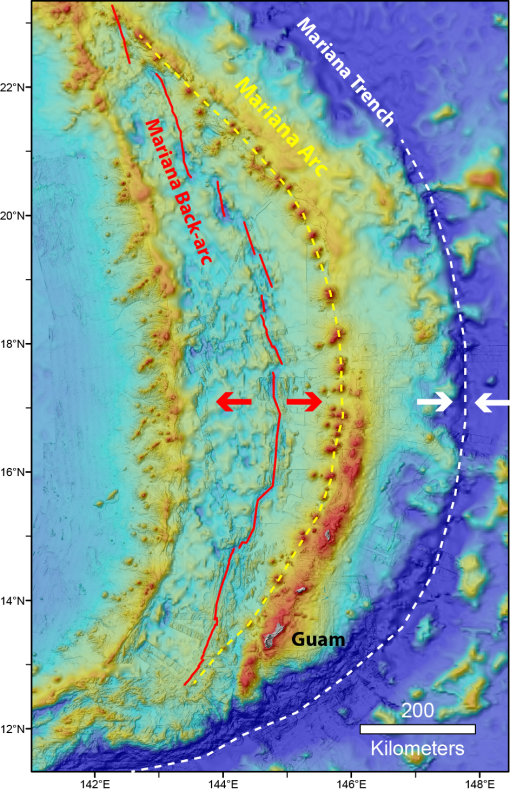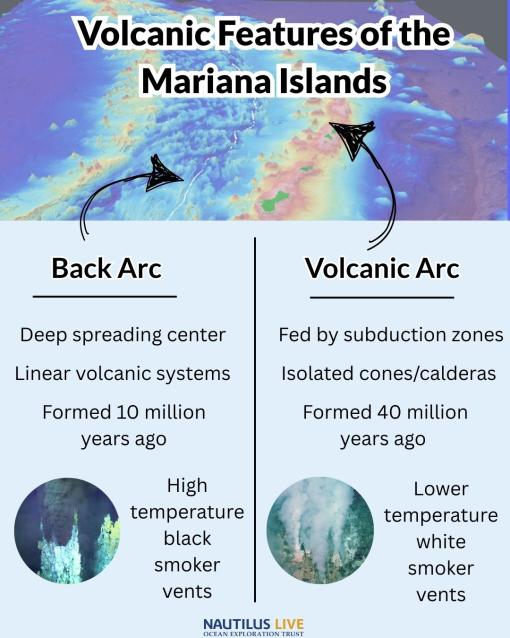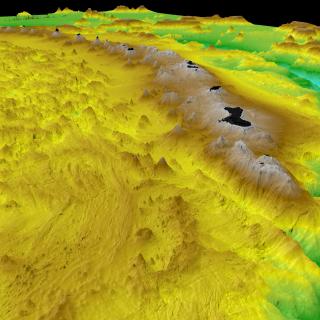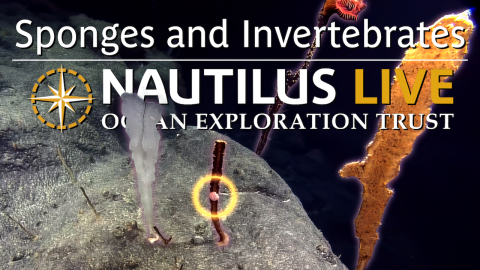Features of the Mariana Region: What is the difference between the volcanic arc and the back arc?

During the NA171 Mattingan expedition, we’re exploring the deep-sea areas of the Mariana region- one of the most tectonically and volcanically dynamic places on the planet. This area is home to more than 60 submarine volcanoes and a back arc spreading center where new seafloor is created. There is a lot going on here, and keeping all of the different geological features straight can be tricky. Luckily, we have the help of some experts.
The expedition’s Co-Lead Scientist, Bill Chadwick (with Oregon State University), explains the layout of the region by dividing it into a series of features. From east to west, they are: the Mariana Trench, the forearc, the arc, the back arc, and finally, the remnant arc. Guam and the other inhabited islands in the southern part of the Mariana region were originally formed in the arc, but are now part of the forearc (the area between the trench and the arc). They are made up of old uplifted volcanic rocks covered with limestone and are no longer volcanically active.

To the west of these islands are two different volcanically active areas that we’ll be exploring during the expedition: the modern volcanic arc and the back arc. The volcanic arc is made up of all the conical volcanoes that are currently fed by magmas rising upward from the subduction zone. This arc includes the nine Mariana islands from Anatahan northward, and over 60 submarine volcanoes called seamounts. Some of the seamount summits come very close to the ocean surface, while others are smaller with deeper summits. About a third of the arc seamounts are hydrothermally active (they have warm water coming out of them, heated by the magma and hot rock inside them).
“The submarine volcanoes in the Mariana arc host some of the most amazing hydrothermal systems I’ve ever seen. Some we’ve seen actively erupting underwater, yet shrimp communities are thriving nearby. Others have pools of molten sulfur on the seafloor, with big populations of tiny flatfish. We’ve also seen other sites where droplets of liquid carbon dioxide are coming out of the seafloor (because of the high pressure at that depth), surrounded by mussels. All these animals are specialists, and are only found at underwater volcanoes,” says Chadwick.
If you go further west, you’ll hit the back arc. This line of volcanoes is very different because of how they’re formed. Rather than being created by the subduction zone, this is where the seafloor is spreading apart. This spreading leads to upwelling and melting in the mantle below, which then feeds magma to the back arc spreading centers. Because of this, the back-arc region is a series of very deep basins, a very different setting than the shallow seamounts and islands of the arc.
“While there is only 20-120 km between the arc and back arc at any given point, they are very different in their geology, chemistry, and the resident biological communities,” says Chadwick.

When exploring active volcanoes underwater, we often find hydrothermal activity. Not all volcanoes have this, but the ones we know about provide a fascinating look into the connections between the geology, chemistry, and biology of the region. Vents found in each setting are different. Along the volcanic arc, vents are mostly low-temperature white smokers from sulfur chimneys. These extremely acidic fluids generally measure 100 degrees Celsius or below and release lots of carbon dioxide and sulfur dioxide. The back arc, on the other hand, forms impressive chimneys called black smokers, with temperatures over 300 degrees Celsius in some areas. The back arc vent fluids are less acidic and full of metals.
“Think of it like this: fluids from the volcanic arc are like decaf coffee (weakly influenced by the rocks they pass through), while those in the back arc are equivalent to a double espresso (having leached out lots of elements from the rocks they flow through underground before returning to the surface),” says Chadwick.
Difference in the vent geology and vent fluid chemistry creates differences in the biological communities they support as well. NA171 Co-Lead Scientist Verena Tunnicliffe (University of Victoria) tells us about life at these vent sites. Both hydrothermal vent ecosystems support chemosynthetic life with food chains deriving energy from chemicals rather than sunlight. Scientists believe the very first life on Earth was chemosynthetic (and that life discovered on other planets may be chemosynthetic too). These habitats include cold seeps and methane hydrates that also support unique deep sea habitats. Vent species like tubeworms and clams have a symbiosis with sulfide-oxidizing bacteria living in them that create CO2 as a food source.
“At back arc sites, there are about 50 identified species, and most are equally dispersed in the region. At volcanic arc vents, however, we observe low diversity at each site but a wide variety of different species between sites (a phenomenon known as high beta diversity),” says Tunnicliffe. “However, only six species have been found at both the volcanic arc and back arc vent sites so far. Very few species live in both environments. Instead, most species are adapted to one environment or the other.”
During the NA171 expedition, we’ll be exploring and sampling sites in both the volcanic arc and the back arc. In June, the NA172 expedition will dive in an entirely different region known as the forearc. This is the area between the arc and the famous Mariana Trench that is full of unique geological features called mud volcanoes. These are not “normal” volcanoes like the ones in the arc and back arc because they do not erupt lava. Instead, mud volcanoes spew out sediment, rocks, fluids, and gases derived from deep in the subduction zone.
Stay tuned as we continue to explore the many different and unique geological features in this wonderfully tectonically active and dynamic region!

Mattingan: Mariana Arc Volcanic Exploration
E/V Nautilus will begin the 2025 season exploring the ocean of the Mariana Islands- one of the most tectonically and volcanically dynamic locations on the planet. This area is home to one of the most active arc volcanic systems on Earth with more than 60 submarine volcanoes, and a back-arc spreading center where new seafloor is created.



